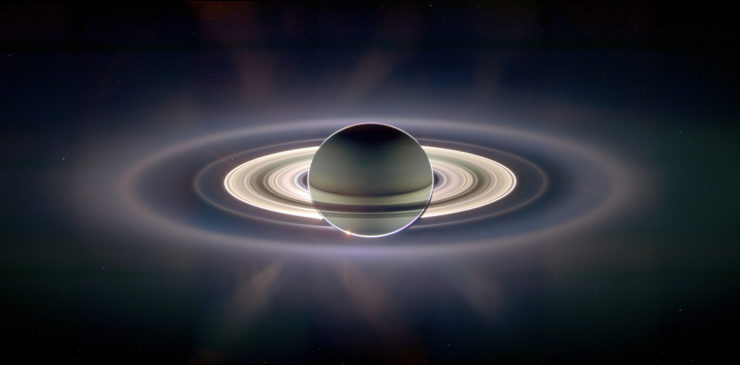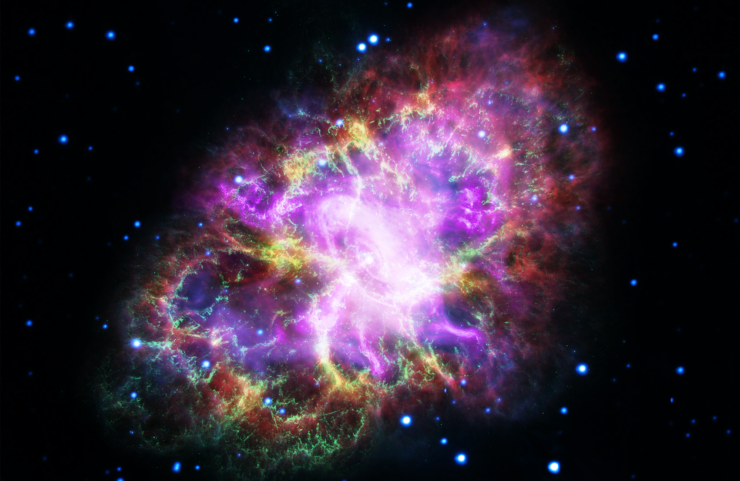I’ve always been struck by one curious element in James E. Gunn’s 1972 SETI fix-up novel The Listeners: There’s an alien beacon orbiting the supernova remnant at the heart of the Crab Nebula. But…stars that end as supernovas are too short-lived for complex life to evolve on their planets, so whoever built the Crab beacon didn’t come from that system. What’s going on?
There is another much older SF story that might cast light on the matter—Murray Leinster’s 1945 “First Contact.” In it, human explorers probing the Crab Nebula encounter an alien scout vessel busily doing the exact same thing. This isn’t entirely coincidental: the Crab Nebula is an intriguing object that is visible across a fair swath of the galaxy.
Buy the Book


To Sleep in a Sea of Stars
It’s just the sort of object SF authors might find notable enough to namecheck. More importantly, it’s something at which curious, technically advanced species would want a closer look. Call it a Leinster Object.
Star systems that could have life-bearing worlds are a dime a dozen. Some estimates put the number at ten billion in the Milky Way. Others put the number at forty billion. These worlds, and systems, don’t stand out in any way. If you’re trying to get someone to take a look at you, you may not have much luck.
Leinster Objects, on the other hand, are interesting and rare. That’s what makes them Leinster Objects. Hang a beacon in orbit around a Leinster Object and you increase the odds that someone, or something, will notice.
In addition, as any number of SF stories (including “First Contact”) have pointed out, you might not necessarily want to give perfect strangers your home address. Which we have done, sending out desperate “Look at me!!!” signals like the Starfish Prime exo-atmospheric nuclear explosions, for example, or space probes with nude selfies, a mix tape, and directions to our home, addressed “to whom it may concern.”
Other intelligent beings may be more prudent than we earthlings have been.
The ideal Leinster Object is both detectable (across a vast area) and unusual. Objects in this category include:
- Sagittarius A*
- globular clusters like Messier 15
- ultra-luminous X-ray sources like M101-X1
- simple supernova remnants like SN 1987A
My personal favourite, if our propulsion technology were up to the task, would be somewhere near the middle of the big nothing known as the Canes Venatici Supervoid.
Which Leinster Objects could be used would be determined by one’s planning horizon and propulsion technology. There is no point in trying to park a beacon in the Crab Nebula if it is outside the range of your best technology. Practicalities might force compromise. You might want to exploit a supervoid, but have to settle for the Local Bubble. Perhaps reaching a globular cluster is out of reach; consider something closer to hand, like the Pleiades. Perhaps reaching true Leinster Objects is just impossible given the available technology, in which case you might want to look around your solar system for something eye-catching that visitors would seem likely to notice.

No doubt you have your own favourite Leinster Object candidates. Feel free to mention them in the comments.
In the words of Wikipedia editor TexasAndroid, prolific book reviewer and perennial Darwin Award nominee James Davis Nicoll is of “questionable notability.” His work has appeared in Publishers Weekly and Romantic Times as well as on his own websites, James Nicoll Reviews and Young People Read Old SFF (where he is assisted by editor Karen Lofstrom and web person Adrienne L. Travis). He is currently a finalist for the 2020 Best Fan Writer Hugo Award and is surprisingly flammable.










